Cameroon
Things to DO
Douala
Douala is Cameroon's largest city, the econimic capital and industrial centre. With its humid climate, it has little to offer travellers. If you're in Cameroon only briefly, it's worth bypassing. However, if you stay around for longer, chances are Douala will begin to grow on you, with its good restaurants, lively nightlife, decaying tropical ambience and excellent fruits.
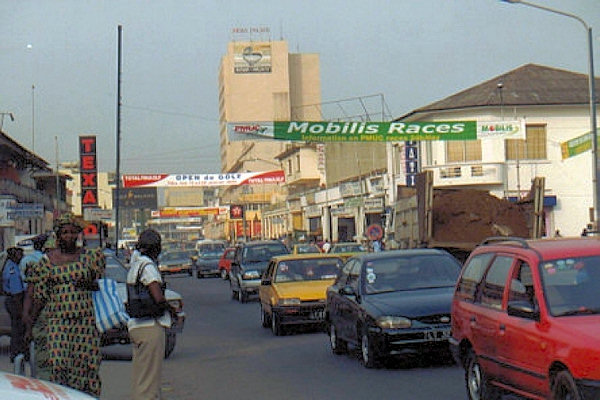 |
|||||
It's also Cameroon's main air hub, and easiest place in the country to change money and take care of business. The city has a reputation
for muggings and you need to be streetwise, especially at night, but it's not as bad as some people make out.
Palace of Justice of Douala is a building originally constructed between 1930-31 under the French Mandate. It now shelters the Court
of Appeal of the Littoral.
The Cathedral of St Peter and St Paul was built in 1936 by French Spiritans fathers and it is based on the legacy of the fathers
Pallotins. The advent of Catholicism in Cameroon has its origins in Germany through the baptism of the first Cameroonian catechumen,
Andreas Kwa Mbange, on January 6, 1889.
Doual'art was registered as a non profit organization in 1992 with the aim of producing site-specific artworks and projects in the
different neighborhoods of Douala. The space was established in the former cinema of the Palace of Douala Kings.
La Nouvelle Liberte; This 12-metre-high monument is a famous landmark in Deido, which was implemented in 1996. At first it was
controversial, as the artist Joseph Francis Sumégné used only metal recovery parts mounted on a frame boiler. It was finally completed
in 2007.
Yaoundé
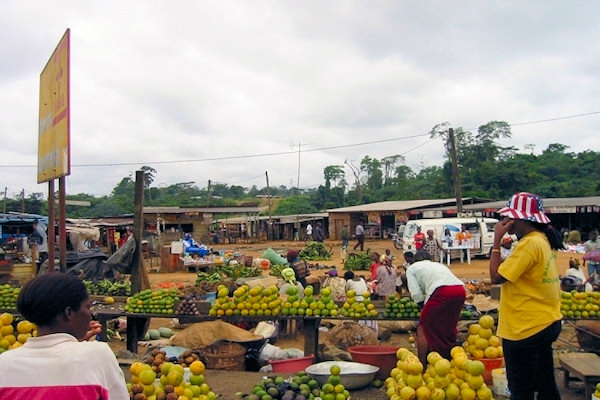 |
|||||
Edéa is a city located along the Sanaga River and a nice stop on the Douala–Yaoundé highway and houses a nice market.
Yaoundé is the capital of Cameroon and the second-largest city in the country at an elevation of about 750 metres above sea level.
Most of Yaoundé's economy is centred on the administrative structure of the civil service and the diplomatic services. Owing to these
high-profile central structures, Yaounde has a higher standard of living and security than the rest of Cameroon.
The city centre houses government offices, some hotels, and the central market.
The Bastos district, is home to foreign embassies and the expatriate European, American and other continental communities (drawn mainly
from the diplomatic corps). The presidential palace and compound are in the Etoudi district.
N'Gaoundéré
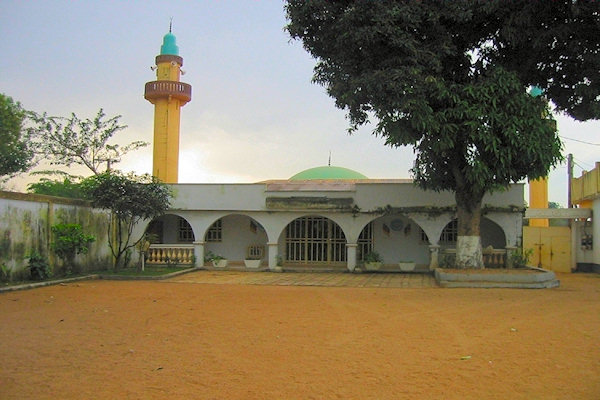 |
|||||
Cool, leafly N'Gaoundéré is the terminus of Cameroon's main railway line and the first major town in northern Cameroon. It is
at 1.100m and makes a relaxing stop.
Attractions in the city include the Lamido Grand Mosque and it has a great market with nice people around.
The Palais du Lamido is the place where the local chief resides with his numerous wives.
The exterior isn't interesting but some of the traditional buildings inside are.
Among other things at the Palais, you can see where the Lamido holds court and conducts mariages, and where the royal barber plies his
trade (the present Lamido apparently follows a rigorous twice weekly barbering routine).
Friday (escpecially) and Sunday are the best days to visit, as you'll be able to see many nobles from surrounding area who come to pay
their respects.
Maroua
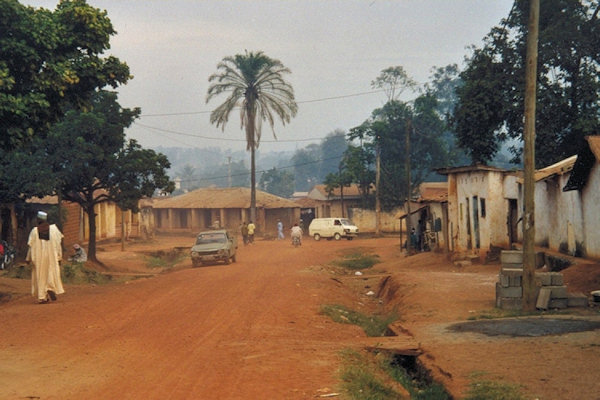 |
|||||
Maroua, Cameroon's northernmost major town, is popular with travellers and a good starting point for exploring the nearby
Mandara Mountains.
It has a lively market, especially on monday when people from the surrounding region converge here to sell their wares.
Tanners take an animal skin and soak it in water. Then they pound and scour the skin to remove flesh and fat.
Next, either they soaked the skin in urine to loosen hair fibers or they let the skin putrefy for several months, after which they dipped
the skin in a salt solution. After the hair fibers were loosened, the tanners would scrape them off with a knife.
Once the hair was removed, tanners bate the material by pounding dung into the skin. They would also take cedar oil, alum, or tannin and
stretch the skin as it lost moisture and absorbed the tanning agent.
Finishing is usually done by coating the surface with paint-like mixes.
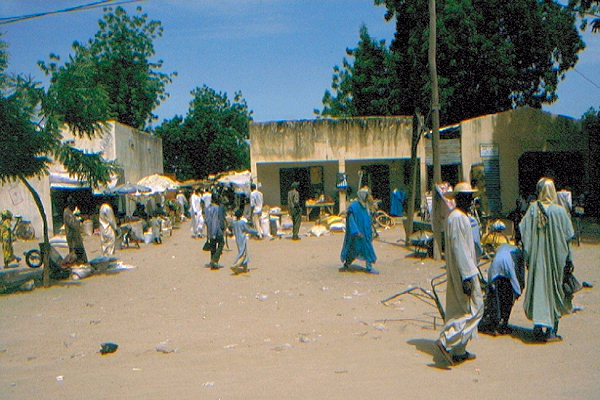 |
|||||
Northern Cameroon is an area of barren rock outcrops, picturesque villages and striking beauty.
In the far north, in the mountainous areas bordering Nigeria, are animist peoples know collectively as "Kirdi" (Fulani for
"pagan" who live in compounds clinging to terraced hillsides, where the cultivate millet and other crops.
For tourists, the north is one of Cameroon's most-popular destinations and highly rewarding if you're able to get off the beaten track.
There are many fascinating villages and markets including Mora, Oudjilla and Tourou.
Mora, capital of the Wandala (Mandara) people, is situated 60km northwest of Maroua on the main road.
It's known mainly for its Sunday market that attracts people from the surrounding area.
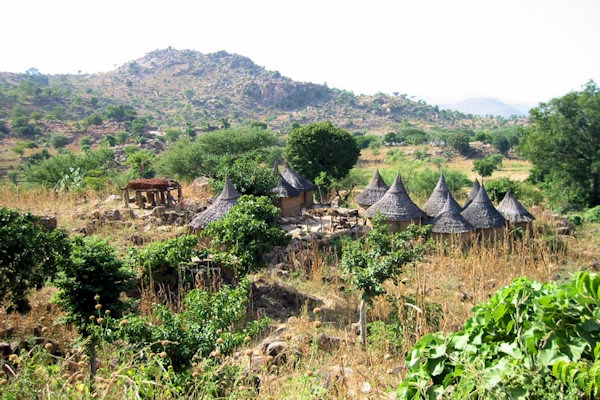 |
|||||
Oudjilla, about 11km west of Mora is an authentic Podoko village, though your experience there may seem a bit
contrived.
You're led on arrival to the "saré" of the chief, who lives in a walled compound encoppassing a maze of roofed passageways which
connect the many huts housing his fifty-plus wives and countless children.
For a negotiable price, you get to visit the chief's compound and see the hut that serves for public deliberation; the sacrificial pen where
the chosen cow awaits slaughter during the harvest festival and into the hut of one of the wives to see the kitchen and the utensils used
for pounding millet, storing water and so on.
At the end, you're "invited" to take pkotos of the chief and some of his wives and for just a little more money, the wives might
even do a harvest dance.
It may give you wonderful photos, but, at the same time, is liable to leave you feeling rather empty.
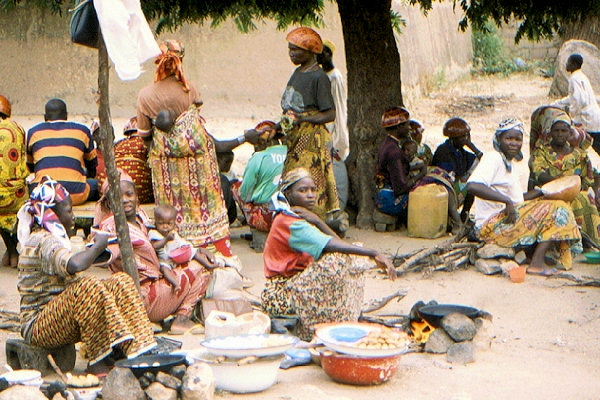 |
|||||
Tourou is a quiet village in a picturesque setting. The women of this village wear decorated calabashes on their heads,
and pieces of wood or bone sticking out of the side of their nose.
The designs on the hats often contain information such as whether the wearer is married or not, or whether the wearer is married or not,
or whether she has children.
Traders come to buy and sell from remote mountain villages all across the surrounding area, usually having walked for hours to get
there.
All sorts of things are on sale from magic concoctions to plastic cutlery and strange food stuffs like peanut paste, tamaring drink and
millet beer.
Every market day there's also an impromptu soccer game in Tourou. Local guys who fancy a game just turn up and play. Soccer is absolutely
huge here in Cameroon.
Waza National Park
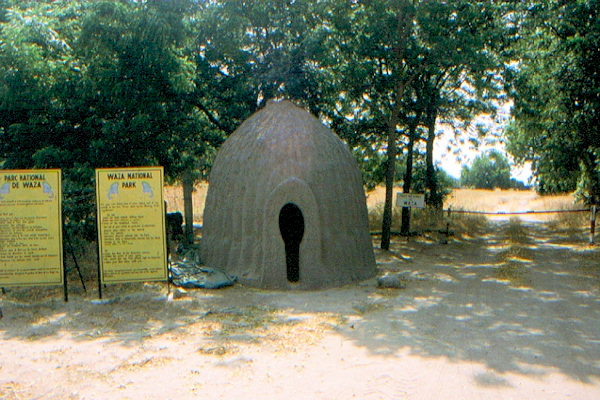 |
|||||
Waza National Park is the most accessible of Cameroon's national parks and the best for viewing wildlife.
It was founded in 1934 as a "hunting reserve", and covers a total of 1.700 square kilometres. Waza achieved national park
status in 1968, and became a UNESCO biosphere reserve in 1979.
While it can't compare with East African parks, you're likely to see elephants, hippos, giraffes, antilopes, many birds and - with luck
- lions.
Late March to April is the best time to viewing, as the animals congregate at water holes before the rains. May and October rains make
some sections of the park inaccessible.
Pouss
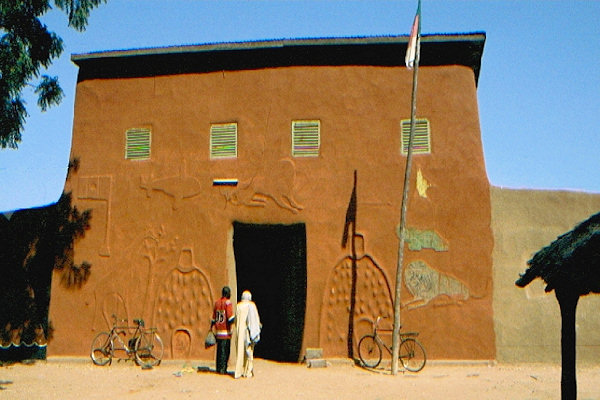 |
|||||
The Fulani Lamidats (Territory ruled by a Lamido - a king or sultan), are among the main important traditional chieftaincies
with their economies based mainly on agriculture and animal husbandry.
The Lamidats and the sultanates are political and administrative units, which are rooted on the local traditions and Islam.
These Lamidats have reached their peak and started already to decline during the colonisation period. The colonizers have introduced
many restrictions to the power of the Lamido and obliged him to share his land and his power with them.
The Mousgoum huts have been famous since the 19th century. Their grand size, curved features and slender shapes have surprised
many travellers stopping in the Mousgoum villages.
Unfortunately, this magnificent architectural culture is slowly disappearing. The few huts still standing that one can admire, which
include several in ruins, are located in the Canton of Pouss.
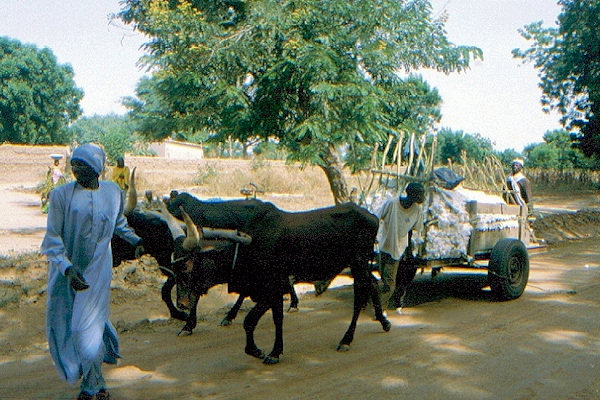 |
|||||
This area is a centre of cotton industry.
The cotton industry relies heavily on chemicals such as fertilisers and insecticides, although some farmers are moving towards an organic
model of production, and chemical-free organic cotton products are now available.
Most cotton is harvested by hand. The local farmers bring the cotton after harvesting to a gathering point, where they get there money .
Lake Maga, an artificial wetland resulting from the construction of Maga dam in 1979, is located upstream of the Logone flood-plain,
immediately south of the town of Maga and bordering the Logone river to the east, which forms the international frontier with Chad.
The lake’s average depth does not exceed 3 m and fluctuates greatly in size, giving it many characteristics of a flood-plain.
In the middle off the lake are some islands where fisherman live; and with some luck you can find hippo's.